In all regions of Russia, different varieties of potatoes grown in Belarus are grown. It is used for personal agricultural purposes. Given the different needs of gardeners, there are varieties of early, middle and late ripening. The brief description and photo provided will help you choose the right view.
Content
Description and characterization of varieties
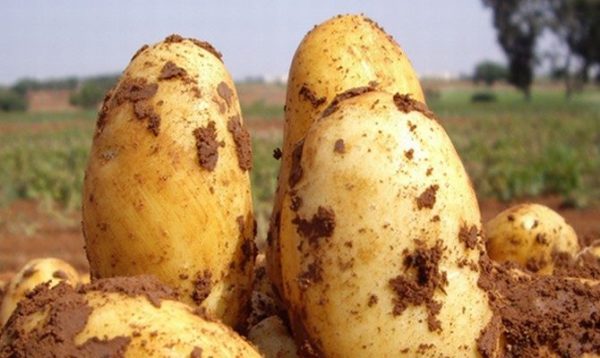 Potatoes bred by Belarusian breeders are cultivated in this country, Russia, Ukraine and the nearest states. The main purpose of cultivation is agricultural. Vegetables are sold, exported, processed into semi-finished products, used to feed animals, and stored for the winter.
Potatoes bred by Belarusian breeders are cultivated in this country, Russia, Ukraine and the nearest states. The main purpose of cultivation is agricultural. Vegetables are sold, exported, processed into semi-finished products, used to feed animals, and stored for the winter.
The vegetable is classified by maturity: early, middle and late. Depending on the region in which they plan to plant the vegetable, take into account the climate. Most varieties tolerate drought and spring frosts. Belarusian potatoes are popular among gardeners due to their high productivity.
Benefits of Belarusian varieties
Consumers and gardeners highlight a number of advantages of potatoes bred by Belarusian breeders.
Advantages are as follows:
- high level of productivity;
- attractive external (salable) look;
- smooth edges, clear shape;
- pleasant taste and aroma;
- have immunity against disease.
It is especially necessary to highlight that the potato calmly tolerates minor spring frosts at night, as well as periods of summer drought. The vegetable is unpretentious in care, it does not need to be often treated from pests.
The best varieties
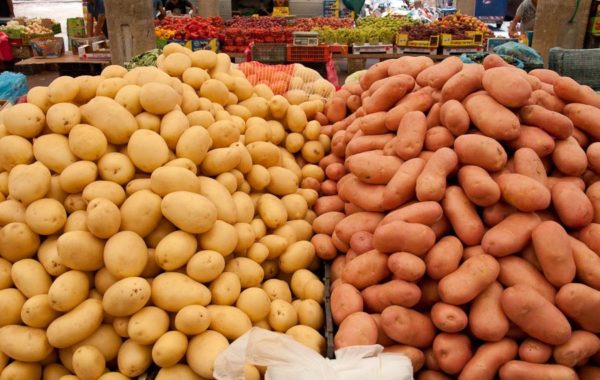 All varieties of Belarusian breeders are endowed with the advantages described above. But along with this, gardeners have identified a list of the best species for cultivation for their own and agricultural purposes.
All varieties of Belarusian breeders are endowed with the advantages described above. But along with this, gardeners have identified a list of the best species for cultivation for their own and agricultural purposes.
These include:
- Axamite.
- Dolphin.
- Scrub.
- Dubrava.
- Volat.
- Zarnitsa.
- Rogneda.
If the purpose of planting is to quickly obtain a crop, then preference should be given to ultra-early varieties. They allow gardeners to harvest potatoes twice a season. Ultra-early vegetables are not suitable for long-term storage. So that they do not lose their presentation, keep it in a cool room, with a temperature of 1-3 ° C.
Types of Early Ripening
Feature early varieties of potato of Belarusian selection is to ripen quickly. After 2-2.5 months after planting, the gardener will receive the first crop. If you plant potatoes in warm regions, then for the season you can get two crops. The disadvantage of early varieties is that the tubers are poorly stored, they are not recommended to be harvested for the winter.
Dolphin
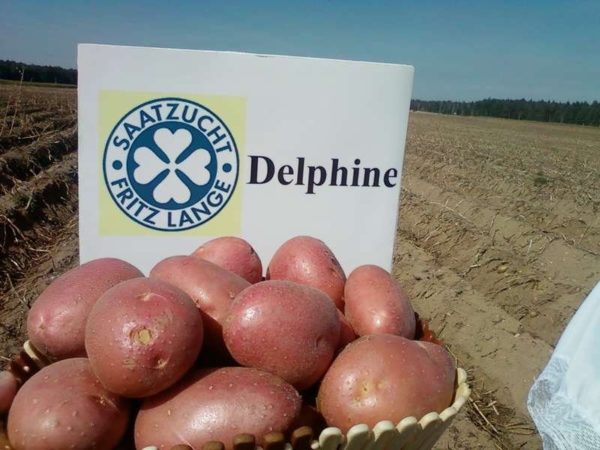 Potato early ripening, which differs from identical varieties by a stable immunity to diseases. The fruits have an oblong, oval shape. The peel is light brown, and the flesh with a slight yellow tint. Productivity is high. From one bush you can collect 15-20 tubers. Dolphin is preferably grown in arid regions because it retains moisture for a long time.
Potato early ripening, which differs from identical varieties by a stable immunity to diseases. The fruits have an oblong, oval shape. The peel is light brown, and the flesh with a slight yellow tint. Productivity is high. From one bush you can collect 15-20 tubers. Dolphin is preferably grown in arid regions because it retains moisture for a long time.
Uladar
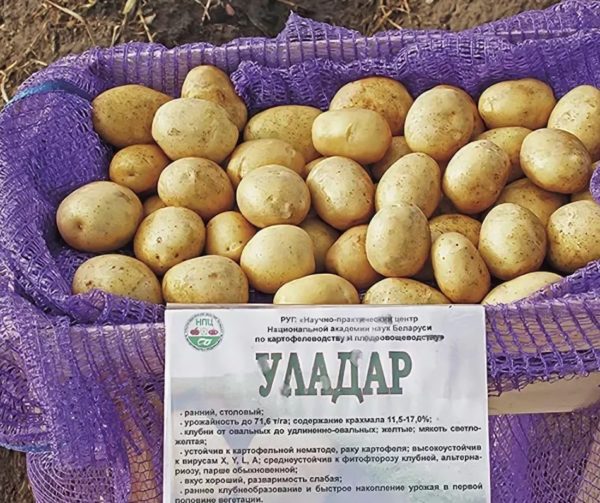 The variety is common among people who have their own garden where they grow vegetables for themselves. During cooking, potatoes practically do not boil, retain their primary form. From the bush, on average, 10-14 tubers are harvested.The size of the potatoes is medium, the skin is light brown in color, the pulp is dense.
The variety is common among people who have their own garden where they grow vegetables for themselves. During cooking, potatoes practically do not boil, retain their primary form. From the bush, on average, 10-14 tubers are harvested.The size of the potatoes is medium, the skin is light brown in color, the pulp is dense.
Lapis lazuli
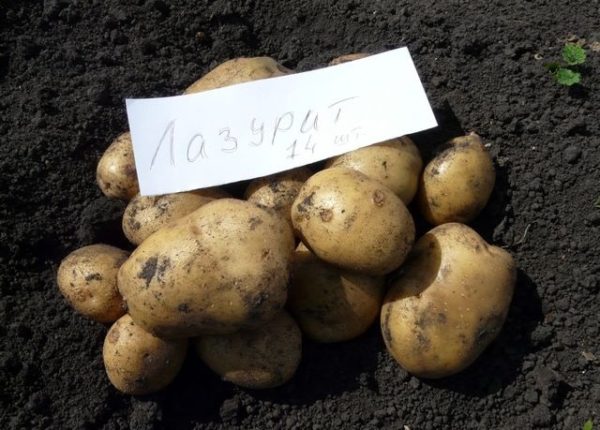 Variety of Belarusian potatoes of medium yield. From one bush collect up to 15 tubers. Top vegetables have a light brown peel, flesh with a yellowish tinge. Due to the average starch content, this type of potato is not suitable for frying or stewing. Vegetables are well boiled, so housewives choose it for making mashed potatoes, first courses.
Variety of Belarusian potatoes of medium yield. From one bush collect up to 15 tubers. Top vegetables have a light brown peel, flesh with a yellowish tinge. Due to the average starch content, this type of potato is not suitable for frying or stewing. Vegetables are well boiled, so housewives choose it for making mashed potatoes, first courses.
Axamite
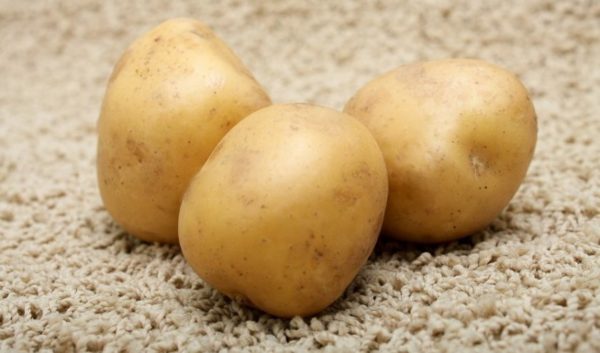 Potatoes of medium productivity. With good care from one bush, the gardener will receive no more than 15 tubers. Vegetable is characterized by low starch content. In cooking, it is used for cooking first and second courses. Potatoes have a medium degree of digestibility, good taste and aroma. The shape of the vegetable is oblong, the peel is light brown, the pulp with a yellow tint in the section.
Potatoes of medium productivity. With good care from one bush, the gardener will receive no more than 15 tubers. Vegetable is characterized by low starch content. In cooking, it is used for cooking first and second courses. Potatoes have a medium degree of digestibility, good taste and aroma. The shape of the vegetable is oblong, the peel is light brown, the pulp with a yellow tint in the section.
Mid-season
No less popular among summer residents are potato varieties with an average ripening period. After planting seeds in the soil, the crop is obtained on average after 3-3.5 months. In warm regions, the ripening period does not exceed 90 days.
When choosing mid-season varieties, preference should be given to Dubrava, Krinitsa and Volat. However, you must take into account your own wishes. Regardless of the type of potato, you can always count on high yields.
Dubrava
A variety of Belarusian potatoes, which is characterized by increased resistance to various diseases. Another advantage is good keeping quality (over 97%). The vegetable is medium-sized, roundish, slightly oblong. The peel is light yellow in color, and small eyes are located on the surface. Inside the potato has a creamy tint. The starch content of 15%.
Krinitsa
Potatoes are medium in size, from one bush you can collect 5-10 tubers, so the variety is characterized as medium-yielding. On a plot of 1 hectare you can get 49 tons of potatoes. Root crops are suitable for long-term storage.
The vegetable is round in shape, with a brownish peel and light flesh; eyes are present on the surface. Experienced gardeners draw attention to the fact that low resistance to late blight is considered a significant drawback of this type.
Volat
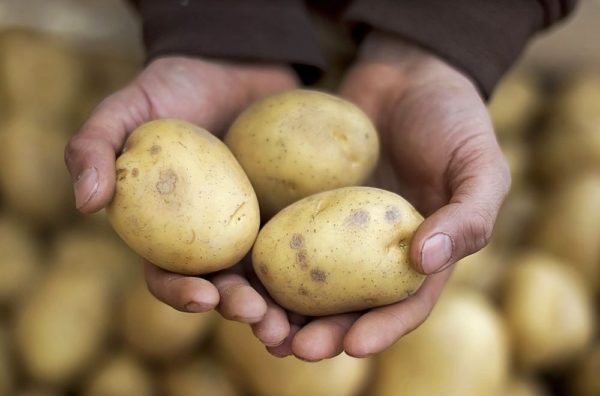 Recently bred by the breeders variety. Along with this, he won the trust of beginners and experienced gardeners due to the ability to grow in different regions and give a high yield. From one bush collect up to 15 tubers.
Recently bred by the breeders variety. Along with this, he won the trust of beginners and experienced gardeners due to the ability to grow in different regions and give a high yield. From one bush collect up to 15 tubers.
Vegetable is suitable for long-term storage, does not lose its qualities during transportation. Ready potatoes have a rich taste and pronounced aroma. The starch content does not exceed 20%.
Lassoon
Potato variety has a good taste, rich aroma. Lassoon breeders identified as a high-yielding species. It is used for cooking first and second courses. Potatoes are suitable for long-term storage, transportation.
It has a high immunity, resistance to late blight. On average, 10-12 tubers are harvested from one bush, but in favorable conditions (watering, fertilizer, climate) 15-17 pieces. The ripening period is 3-4 months.
Crane
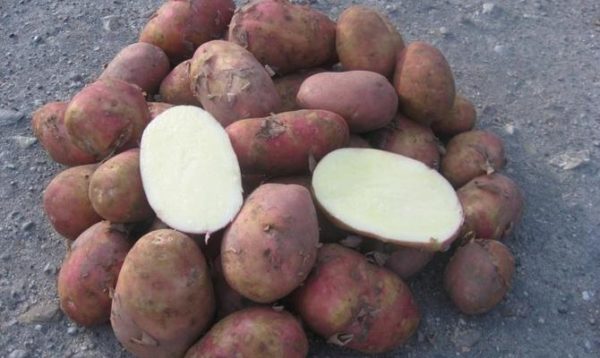 After planting seeds in the soil, gardeners can harvest after 3 months. From one hectare receive an average of 400-600 centners of potatoes. The size of the vegetable is average, and in one bush there are 15-20 tubers. They perfectly tolerate transportation, and the safety level is 96%.
After planting seeds in the soil, gardeners can harvest after 3 months. From one hectare receive an average of 400-600 centners of potatoes. The size of the vegetable is average, and in one bush there are 15-20 tubers. They perfectly tolerate transportation, and the safety level is 96%.
Breeders note that the Zhuravushka variety is resistant to diseases, is able to withstand a golden nematode, late blight, and rhizoctonia. The shape of the tubers is round and oval, the surface is smooth, and on the peel there is a kind of mesh.There are a small number of eyes, the largest vegetable weighs 300 grams.
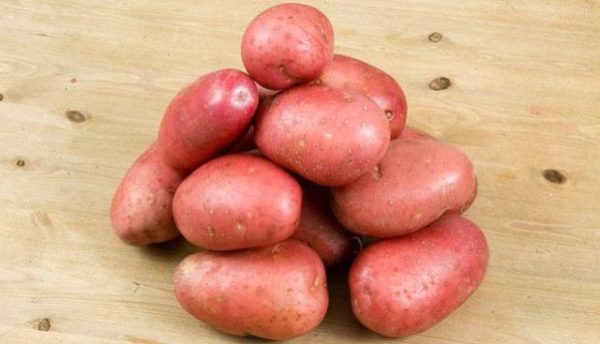 You may be interested in:
You may be interested in:Yanka
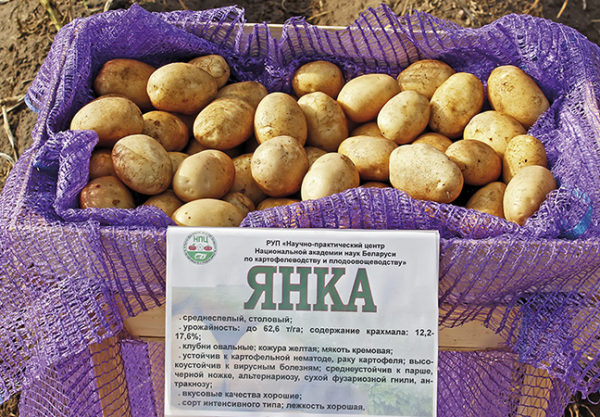 The variety presented in the state register of the Russian Federation has been listed since 2012, which defines it as a relatively young species. It is better to grow it in the central and northwestern parts of Russia. Potatoes are suitable for both industrial and amateur purposes. The resulting crop can be stored in the winter. Also, the fruits are resistant to transportation.
The variety presented in the state register of the Russian Federation has been listed since 2012, which defines it as a relatively young species. It is better to grow it in the central and northwestern parts of Russia. Potatoes are suitable for both industrial and amateur purposes. The resulting crop can be stored in the winter. Also, the fruits are resistant to transportation.
Table grade potatoes for planting. The ripening period after planting in the soil is about 3 months. The average weight of the root crop is 80-110 g. You can get 8-12 tubers from one bush. The starch content is not more than 16%.
Late species
Potatoes of late varieties are especially popular among summer residents with small land plots. This is due to two important factors: the vegetable has an excellent taste, suitable for long-term storage. The ripening period is from 110 to 135 days. When growing, you need to follow agricultural practices, water potatoes in a timely manner. In such conditions, you can get a high yield.
Vesnyanka
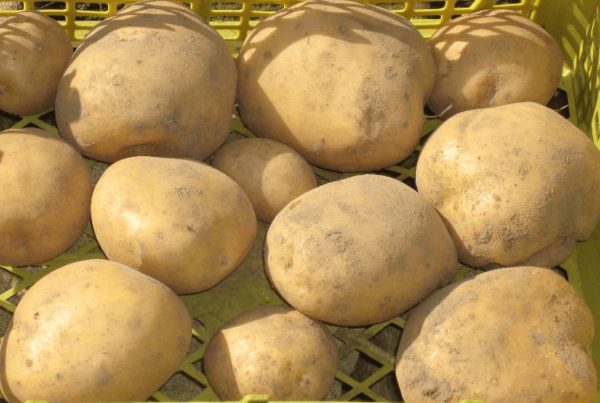 A table variety of potatoes with fruits of a round, slightly oblong shape. Spring grass can be grown in gardens with different types of soil. The ripening period after planting seeds is 4 months. The starch content is in the range of 15-18%. 9-12 tubers are harvested from one bush. In cooking, it is suitable for preparing first and second courses. Vesnyanka is used for the production of starch.
A table variety of potatoes with fruits of a round, slightly oblong shape. Spring grass can be grown in gardens with different types of soil. The ripening period after planting seeds is 4 months. The starch content is in the range of 15-18%. 9-12 tubers are harvested from one bush. In cooking, it is suitable for preparing first and second courses. Vesnyanka is used for the production of starch.
Rogneda
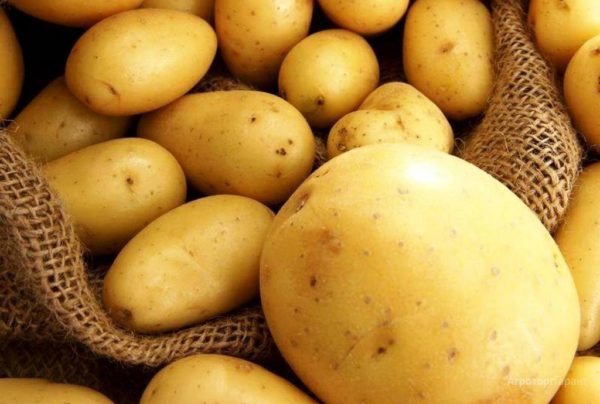 The variety is characterized by the development of tall bushes. Most vegetables are large in size, the skin is light brown in color. The taste is excellent, the flesh is yellow, dense. French fries are made from vegetables. The peculiarity of the variety is that tubers can be dug up unripe. However, they will not lose their keeping quality.
The variety is characterized by the development of tall bushes. Most vegetables are large in size, the skin is light brown in color. The taste is excellent, the flesh is yellow, dense. French fries are made from vegetables. The peculiarity of the variety is that tubers can be dug up unripe. However, they will not lose their keeping quality.
Zarnitsa
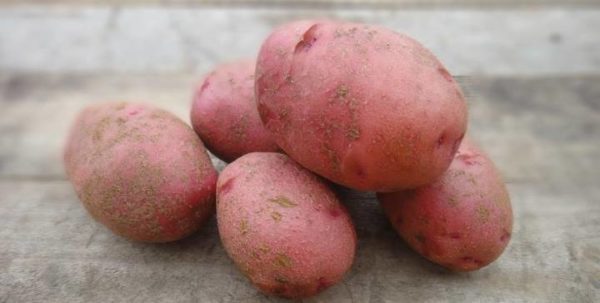
The full ripening period is 4 months. The variety is suitable for cultivation in the central part of Russia. Bushes in height do not exceed 60 cm, root crops have a red tint. The average weight of one potato is 120 grams; up to 15 tubers are harvested from one well. Zarnitsa can be planted in the garden with any type of soil.
The variety tolerates drought, but has low immunity to late blight and other fungal diseases. Along with this, the plant is able to withstand the "black leg", scab, nematode and potato cancer.
Potato Selection Criteria
When choosing seeds, the determining factor is the purpose of cultivation. It can be a dining room (for eating) and long-term storage, or technical (production of starch, convenience foods, etc.). Universal will be varieties with a high starch content.
Features of planting and care
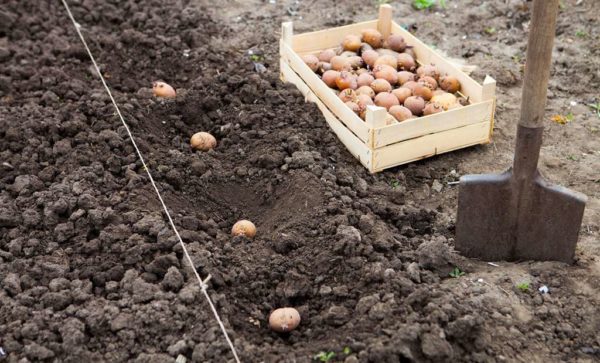 Potatoes begin to be planted after April 15, and end in mid-May. If the region is cold or hot, then the terms are shifted in one direction or another for 2-3 weeks. Orientation is based on soil temperature. At the time of planting, it should be 6-8 degrees Celsius in the daytime and nighttime (at a depth of 10 cm).
Potatoes begin to be planted after April 15, and end in mid-May. If the region is cold or hot, then the terms are shifted in one direction or another for 2-3 weeks. Orientation is based on soil temperature. At the time of planting, it should be 6-8 degrees Celsius in the daytime and nighttime (at a depth of 10 cm).
If the seeds are laid in the ground in early April, it is recommended to cover the garden bed with a dark film.This will help protect future crops from night frosts. They have been preparing land for planting since September. The site must be dug up, weeds removed, mineral-nitrogen fertilizers applied. In the spring, they must dig the bed.
It is better to plant a crop not in the shade of trees, but in a well-lit place. Ideally, the earth should be loose, airy so that the seeds receive enough oxygen. Potatoes are laid in holes to a depth of 8-10 cm for 1-3 pcs. The distance from each other is 30 cm, and between the beds 50 cm.
For almost 100 years, the Potato Research Institute of Belarus has been fruitfully working in the field of selection. Thanks to this, new varieties of potatoes regularly appear. Most of them are suitable for planting in Belarus and throughout Russia, characterized by high productivity, tastes great and is suitable for winter storage.




 Description and description of varieties in Belarus with a photo
Description and description of varieties in Belarus with a photo Do I need to pick flowers from potatoes: why do they do it
Do I need to pick flowers from potatoes: why do they do it When to dig potatoes: timing and availability of new potatoes
When to dig potatoes: timing and availability of new potatoes How to grow a good potato crop: various methods and methods, planting and care
How to grow a good potato crop: various methods and methods, planting and care